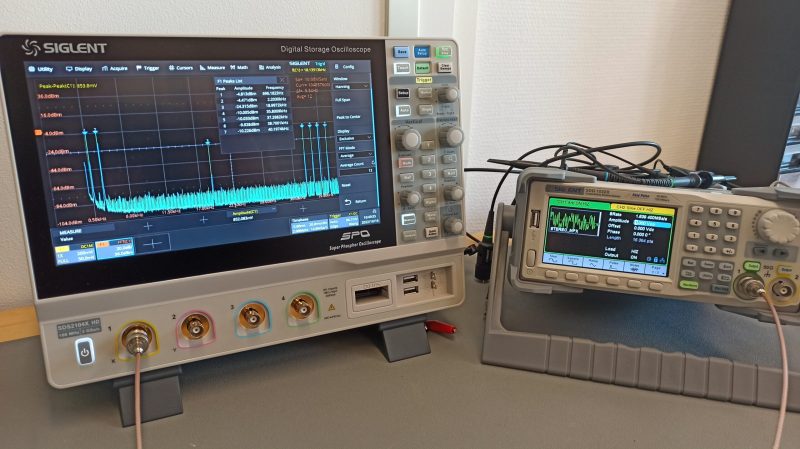A casual understanding of how AM radio works is pretty easy to come by, and standard FM is only a little more complicated. Things can go off the tracks a bit with stereo FM, though — figuring out how they squeeze two separate audio tracks onto one radio signal is a bit of a head-scratcher. In that case, wrapping your head around the concept might be helped by mocking up a stereo FM signal with an arbitrary waveform generator and a little bit of Python.
Not that [Sebastian] of Baltic Lab was unfamiliar with multiplex FM theory, mind you. As he explains it, his goal was to generate a valid stereo FM signal with a different pure tone on each channel, 700 Hz on the left and 2,200 Hz on the right. Luckily, [Sebastian] has a nice AWG, the Siglent SDG1032X, which has an Ethernet connection that can be used to control it remotely along with PyVISA, a Python package for controlling instruments using the Virtual Instrument Software Architecture protocol.
The meat of this project, and what really helps drive home the concept of putting multiple audio signals onto an FM signal, lies in the Python code that generates the component parts. [Sebastian] does a great job explaining how he programatically generates the sum and difference signals along with the 19 kHz pilot tone, and puts them all together into one waveform. The output of the program is used to generate a series of values that are sent to the arbitrary waveform generator, which outputs the desired FM signal. Looking at the output on a spectrum analyzer, the two audio tones are clearly visible, as are the attenuated pilot tone and some other spikes a little further up.
Just add an antenna to the setup and you’d have the world’s dullest FM radio station — but at least it’d be in stereo. Or if you want to check out the origin story for FM radio, we’ve got something for that too.

















https://www.instructables.com/Arbitrary-Wave-Generator-With-the-Raspberry-Pi-Pic/
How does this compare as a “poor man’s” version – using only a pico?
This type of signal different frequency pure tone on both channels) is almost the worst case scenario for the transmitter and receiver. Different multitone per channel is worse.
I was really just expecting this to be a link to https://projects.osmocom.org/projects/osmo-fl2k/wiki
I picked up a bunch of those a few years back and I’ve found quite a few fun uses for them. I need to get back to the I/Q upmixer I was working on some day.
The shame is that the AWG can’t stream samples over the network for buffering and playback. You’re limited to a tiny waveform memory, which is why this only works with pure tones rather than music programming or something.
You know… It’s really not that hard to generate high fidelity stereo FM with a small handful of analog parts. You’ve got a mono signal (baseband) and a L-R single subcarrier with a suppressed carrier and 19 KHz pilot.
Actually, it’s REALLY hard to generate a composite stereo signal that meets all the FCC requirements for frequency response, distortion, and channel separation over the entire audio spectrum. Phase errors are NOT you friend. I was involved with the design of the first commercial stereo generator which actually met those specs. It required some very sophisticated audio filters which took WAY more than a “handful of parts”.
This the core of an ip2fm gateway I made using raspberry pi2 and an HiFi berry dac (192khz to provide left+right+rds):
https://jontio.zapto.org/hda1/paradise/jmpxencoder/jmpx.html
The “modulator core” was sponsored by my (ex) company and released open source.
We need it to replace microwave links feeding the broadcasting sites with “normal” internet streaming (low latency).